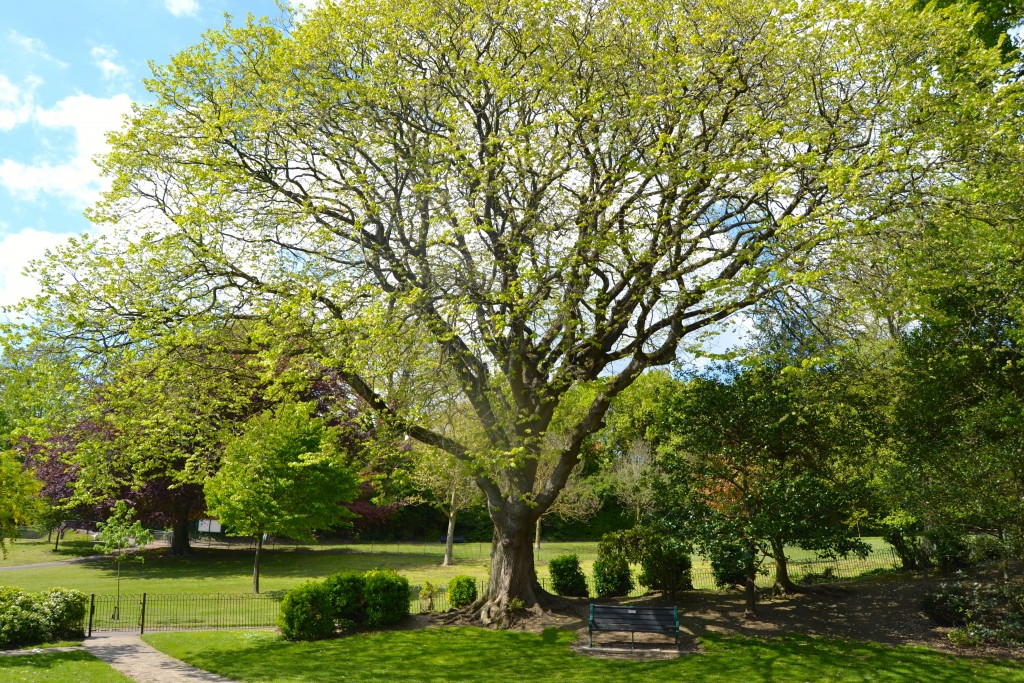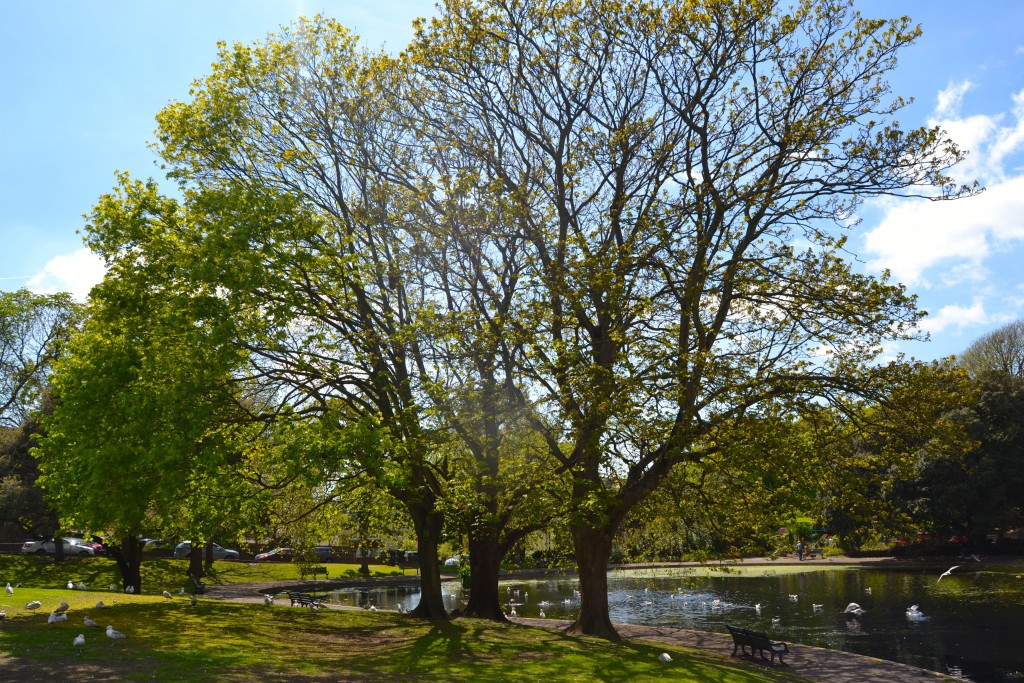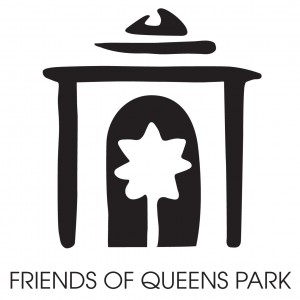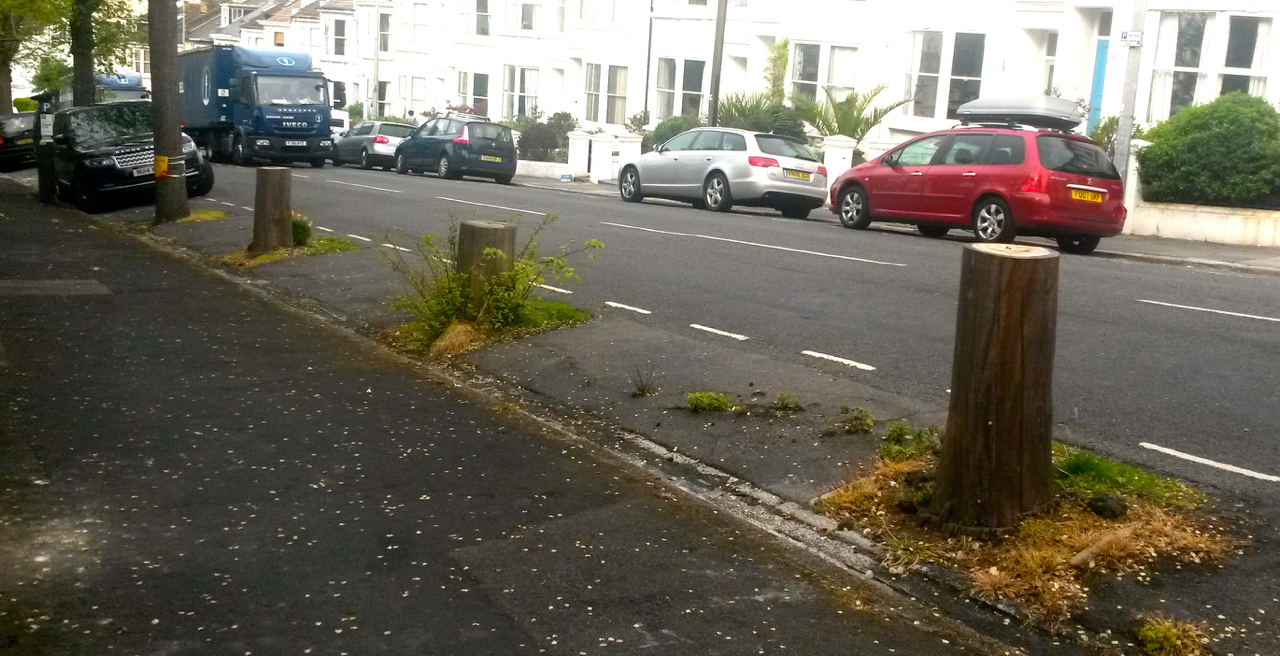other
← Pond Update May 2015 Picnic In The Park 2105: Thank You →The Elm Trees Of Queen’s Park
May 6, 2015You probably know that the arrival of Dutch Elm Disease in Britain around 30 years ago virtually wiped out the Elm population in this country. As many 25 million trees in the UK were lost, causing an environmental catastrophe.
[below: How To Spot An Elm, and Elm Trees: Did You Know?]
There was similar devastation in Europe as the disease spread across the continent. Paris once had 30,000 Elms lining its boulevards and avenues – now there are less than 1,000.
All was lost? Not quite. One small corner of Britain held out against the disease, nurturing and maintaining its elm population at more or less the pre-1980s level, and that corner is the City of Brighton & Hove. Complete disaster was avoided thanks to people like Rob Greenland, who was the Senior Arboralist on the council during the darkest days of the disease, when they were chopping down as many as 700 infected trees a year in the city.

Elm leaves are tear drop shape, with serrated edges, typically with an asymmetrical shape from the base.
That they were able to preserve so much of the local Elm population is thanks to two factors. The first is the unique character of our seaside micro-climate. “The South Downs and The English Channel form natural defences across which the disease cannot easily travel,” explains Greenland. The second factor was the diligence and energy of the council’s Elm protection programme: “During the summer months, a strategy of tactical pruning of infected boughs is used by the council to help stop Elm disease spreading.”
There is calm during the winter months, and then the fight starts in earnest around mid-June. As temperatures rise, elm bark beetles seek out healthy, mature elm trees in Brighton & Hove in which to make their home. Unfortunately, these beetles carry the elm disease which can kill a healthy tree in a few short weeks. Over the summer months, the council’s Arboricultural Service team is on alert, ready to leap into action to treat outbreaks of elm tree disease wherever it occurs. Upwards of a hundred council staff are trained in identifying the first signs of disease, and their ranks are enhanced by many more local spotters, eager to maintain and preserve our historic Elm population.
A typical way of spotting elm disease is when the leaves go brown and start shedding in mid-summer. If you have an Elm tree in your garden showing signs of disease, contact the council and they will take the necessary action free of charge. Follow the instructions here.
Dozens of trees – Elm trees typically get infected from the top down – are treated, pruned and safely preserved, and only a handful are lost each year (about 30 in Brighton & Hove in 2014). Over the summer of 2014, the Queen’s Park area lost three elms on Freshfield Road and one on West Drive. The condemned elms are swiftly ‘girdled’ by cutting out a thick strip of bark around the waist of the tree to prevent further infection reaching the roots, before it is felled. A glance down West Drive shows you where elm trees have been lost, where new ones have been planted, and where mature, healthy Elms continue to flourish.
Elms form part of the fabric of this city. Most of the trees in Pavilion Gardens are elms, and key outdoor areas – Preston Park, Hove Park, The Level – are framed by Elm trees. It is an indigenous tree, suited to the thin top soil and chalky base, thriving in the salty south westerlies that blow in off the Channel. Not surprisingly, the citizens of Brighton & Hove have become emotionally attached to them. When an Elm tree in Vernon Terrace, Seven Dials, was condemned due to its over burdened roots, 4,300 locals signed a petition to save it, and the tree is still there. When building plans at Brighton College required the removal of a 100 year old English Elm, the multimillion pound proposal was swiftly blocked by the council. The Friends Of Queen’s Park logo, inspired by the arch at the foot of West Drive, depicts a small tree visible through the arch. The tree is, of course, an Elm.
Queen’s Park is ringed by Elm trees, on North, East and West Drives, with a couple in the Royal Spa area and a further 20 or so within the park itself. Perhaps the biggest and finest stands tall in the playground area behind the cafe, supporting a swing in the summer months. There are three mature elms, side by side, on the path from the tennis pavilion to the table tennis table, probably aged over 100 years old. To defend these trees from disease is to defend the very character of Queen’s Park, and yet during the 80s, it looked certain we’d lose them all.
Happily, our Elm population today remains large and healthy. There are approximately 17,000 Elms in the City, which is now home to the National Elm Collection. “That Brighton’s parks and Georgian streets still have a flourishing Elm population,” said a recent BBC report, “is testament to the efforts of a team of council tree experts who refused to yield to its ravages.”
Thanks to Rob Greenland and his site BrightonElmTrees.com for information supplied. Rob was formerly the senior Arboriculturist with Brighton Borough Council. See the current Elm Disease page on the Brighton&Hove City Council webpage.
How To Spot An Elm:
The Elm tree typical grows to a significant size (30-40 metres), similar to an oak tree. Its distinctive bark has thick deep ridges running up and down (see photo). The leaves are tear drop shape, with serrated edgers, typically with an asymmetrical shape from the base. They go a lovely yellow/orange colour in the autumn.

A wooden chair, presented to King George IV, made from the elm tree that overlooked the Battle of Waterloo
Did you know:
The main varieties found in Brighton are the English Elm, the Cornish Elm and the Jersey Elm.
Many of the new plant Elm varieties are hybrids bred to resist elm disease.
Tree conservationists travel from all over the world to find out how Brighton successfully maintains its elm population.
Formerly known at ‘Dutch’ elm disease, it does not, in fact, have anything to do with the Netherlands.
In 1815, the Duke Of Wellington chose an elm tree as his principle command post during the battle of Waterloo. Dubbed the Waterloo Elm, the tree was later cut down and the wood used to make special chairs for the Duke and King George IV.
The decapitated tree in the dog area of Queen’s Park is not an Elm tree. But the tree just uphill from it, with the ring wood seating, is an elm tree.
The Twin Elms of Preston Park are believed to be four hundred years old. The oldest elm tree in Queen’s Park is thought to be about 150 years old.
Follow the Friends Of Queen’s Park on Facebook & Twitter for all the latest updates
This entry was posted in Uncategorized. Bookmark the permalink. ← Pond Update May 2015 Picnic In The Park 2105: Thank You →-
Archives
- June 2025
- May 2025
- March 2025
- October 2024
- May 2024
- March 2024
- February 2024
- November 2023
- October 2023
- June 2023
- April 2023
- September 2022
- February 2022
- November 2021
- October 2021
- September 2021
- July 2021
- June 2021
- May 2021
- November 2020
- September 2020
- August 2020
- June 2020
- February 2020
- December 2019
- November 2019
- September 2019
- August 2019
- June 2019
- March 2019
- November 2018
- September 2018
- July 2018
- June 2018
- May 2018
- March 2018
- November 2017
- October 2017
- August 2017
- July 2017
- June 2017
- May 2017
- April 2017
- March 2017
- January 2017
- November 2016
- October 2016
- September 2016
- August 2016
- July 2016
- June 2016
- May 2016
- February 2016
- January 2016
- December 2015
- November 2015
- September 2015
- July 2015
- June 2015
- May 2015
- April 2015
- March 2015
- December 2014
- November 2014
- October 2014
- September 2014
- July 2014
- June 2014
- May 2014
- April 2014
- March 2014
- January 2014
- December 2013
- November 2013
- October 2013
- July 2013
- June 2013
- May 2013
- April 2013
- February 2013
- January 2013
- December 2012
- November 2012
- October 2012
- August 2012
- July 2012
- June 2012
- May 2012
-
Meta




